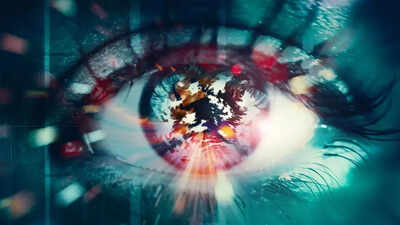Is your brain 15 seconds behind? Study reveals you are seeing the past, not the present |

Have you ever felt fully present and aware of your surroundings? A groundbreaking 2022 study published in Science Advances suggests that what we perceive as the present moment may actually be an illusion. According to researchers, your brain could be showing you a visual representation that’s up to 15 seconds old. This surprising phenomenon, recently highlighted by Popular Mechanics and , reveals that our brains blend past visual inputs to create a stable, seamless view of the world. In reality, we may constantly be seeing the past carefully edited by the brain to feel like “now.” Explore how your brain does this and why.
Scientists discover why your brain shows you a delayed version of reality
The human brain doesn’t process the visual world in real time. Instead, it delays and blends images from the recent past to create a stable and smooth picture of what’s around us. Scientists call this effect a
“previously unknown visual illusion,”
one that shields us from the chaotic nature of moment-to-moment perception.Rather than a flaw, this delay is a survival feature helping us cope with constant sensory input in a dynamic world. Think about how quickly your environment changes — blinking lights, shifting shadows, moving objects, or your own eyes darting across a room. Processing every single change instantly would overwhelm your brain.To avoid sensory overload, your brain uses a process called serial dependence — it blends what you’re seeing now with what you saw a few moments ago. This technique results in visual smoothing, giving you the impression of a calm, unchanging scene. In other words, your brain sacrifices precision for peace of mind.
Your brain’s visual perception is a 15-second illusion—here’s how it works
The study found that our brains may be relying on visual snapshots from up to 15 seconds in the past. That means what you perceive as the “present moment” is an edited replay of earlier visual input.This delay helps us function in a constantly changing environment by preventing cognitive fatigue. It’s a kind of biological buffering — like your brain is constantly editing a video, always playing back the last few seconds to ensure continuity. Far from being a glitch, this feature offers a massive evolutionary benefit. By focusing on consistency rather than hyper-accurate real-time feedback, the brain allows us to:
- Stay focused on tasks
- Reduce distraction
- Respond more calmly in unpredictable situations
In a fast-moving world, this smoothing effect ensures our attention isn’t hijacked by every minor change around us.
What does it mean to “Live in the Moment”
This discovery challenges a central idea in mindfulness and philosophy — the concept of being fully present. If our visual reality is based on the past, then the “now” we believe we’re living in is not truly present, but rather a curated experience shaped by our brain’s memory and guesswork.It raises intriguing questions:
- Can we ever perceive reality objectively?
- Is consciousness just a story our brain tells us?
- What does “the present” even mean in neuroscience?
You’re seeing the past — and your brain doesn’t want you to know.





